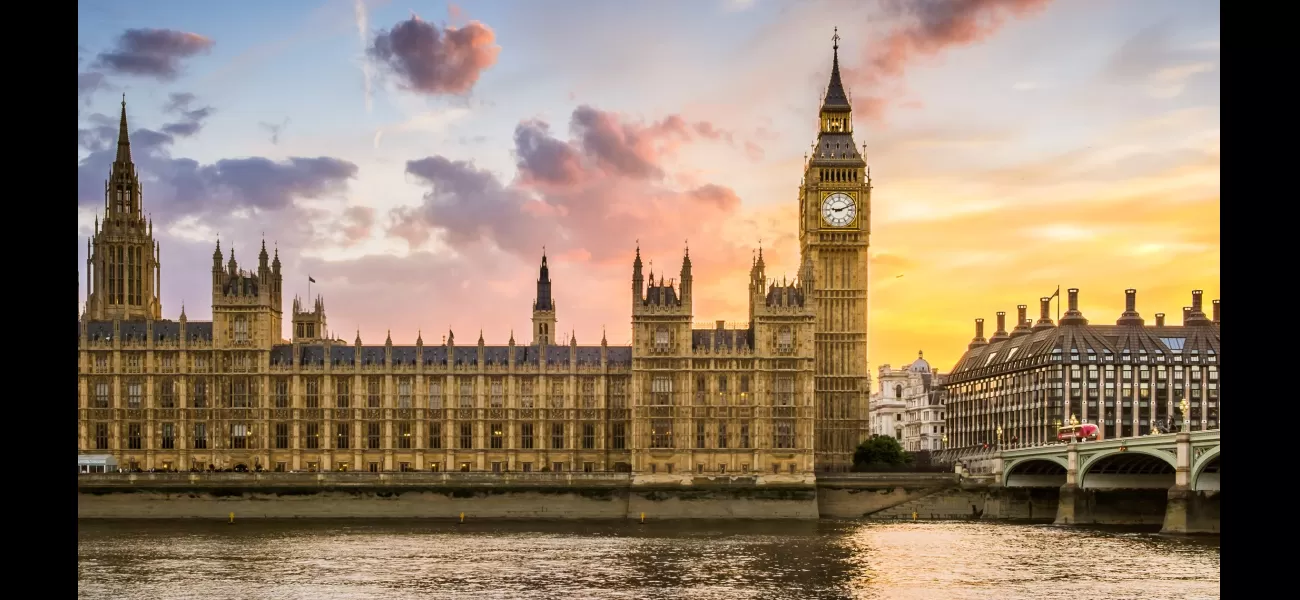UK's potential appearance in 60 years due to intense 'climate shift' depicted in map.
Londoners should brace themselves for much warmer temperatures.
July 8th 2024.

As the years go by, Londoners can expect to feel a significant change in their weather patterns. While we may have grown accustomed to the rain and cooler temperatures, it seems that a new scorching climate zone is on the horizon. According to an interactive map developed by the University of Maryland, our future weather looks quite alarming.
Already, this summer has seen Europe facing intense wildfires, with temperatures reaching a staggering 40 degrees Celsius in Cyprus. But this is just the beginning. The map predicts that in 60 years time, Londoners will experience summers that are 4.6 degrees warmer and 10% drier, giving us a climate similar to that of southern France. Lead researcher Matthew Fitzpatrick explains that this shift towards warmer climates is happening across the globe.
But it's not just London that will be affected. Other areas in the UK, such as Liverpool and Cardiff, can also expect to see a rise in temperatures and a decrease in rainfall. In fact, Cardiff is set to see the biggest jump, with temperatures rising by nearly 5 degrees and a 21.8% decrease in rainfall. Even Scotland's capital, Edinburgh, will see a 4.1 degree increase in temperature and 8.5% less rainfall, with winters becoming 13% wetter due to warmer air holding more moisture.
The interactive map, created by researchers at the University of Maryland, gives us a glimpse into what our future may look like. It's predicted that England's climate will eventually resemble that of Basque Country in Spain, and the data used comes from the Intergovernmental Panel on Climate Change. Fitzpatrick adds that in 50 years time, cities in the northern hemisphere will start to feel more like those in the southern hemisphere.
The map also features a section that explores the possibility of reducing emissions, in line with the Paris Climate Accord. It's a stark reminder that the choices we make now can have a significant impact on our future climate. And with wildfires already breaking out across Europe this summer, it's clear that the effects of climate change are being felt most strongly in Europe, North America, and Oceania.
In fact, research from 2015 showed that almost 6% of the Earth has already shifted towards warmer and drier climates. And while we may not feel the full effects here in London, those living closer to the equator will undoubtedly experience the most significant impacts. Fitzpatrick explains that as we move towards the equator, there are fewer and fewer places that will have a similar climate to what we're used to. And as scientists continue to sound the alarm on climate change, the hope is that this interactive map will help people better understand the magnitude of the situation. After all, there is no place on Earth that can accurately represent what these regions will be like in the future.
Already, this summer has seen Europe facing intense wildfires, with temperatures reaching a staggering 40 degrees Celsius in Cyprus. But this is just the beginning. The map predicts that in 60 years time, Londoners will experience summers that are 4.6 degrees warmer and 10% drier, giving us a climate similar to that of southern France. Lead researcher Matthew Fitzpatrick explains that this shift towards warmer climates is happening across the globe.
But it's not just London that will be affected. Other areas in the UK, such as Liverpool and Cardiff, can also expect to see a rise in temperatures and a decrease in rainfall. In fact, Cardiff is set to see the biggest jump, with temperatures rising by nearly 5 degrees and a 21.8% decrease in rainfall. Even Scotland's capital, Edinburgh, will see a 4.1 degree increase in temperature and 8.5% less rainfall, with winters becoming 13% wetter due to warmer air holding more moisture.
The interactive map, created by researchers at the University of Maryland, gives us a glimpse into what our future may look like. It's predicted that England's climate will eventually resemble that of Basque Country in Spain, and the data used comes from the Intergovernmental Panel on Climate Change. Fitzpatrick adds that in 50 years time, cities in the northern hemisphere will start to feel more like those in the southern hemisphere.
The map also features a section that explores the possibility of reducing emissions, in line with the Paris Climate Accord. It's a stark reminder that the choices we make now can have a significant impact on our future climate. And with wildfires already breaking out across Europe this summer, it's clear that the effects of climate change are being felt most strongly in Europe, North America, and Oceania.
In fact, research from 2015 showed that almost 6% of the Earth has already shifted towards warmer and drier climates. And while we may not feel the full effects here in London, those living closer to the equator will undoubtedly experience the most significant impacts. Fitzpatrick explains that as we move towards the equator, there are fewer and fewer places that will have a similar climate to what we're used to. And as scientists continue to sound the alarm on climate change, the hope is that this interactive map will help people better understand the magnitude of the situation. After all, there is no place on Earth that can accurately represent what these regions will be like in the future.
[This article has been trending online recently and has been generated with AI. Your feed is customized.]
[Generative AI is experimental.]
0
0
Submit Comment





